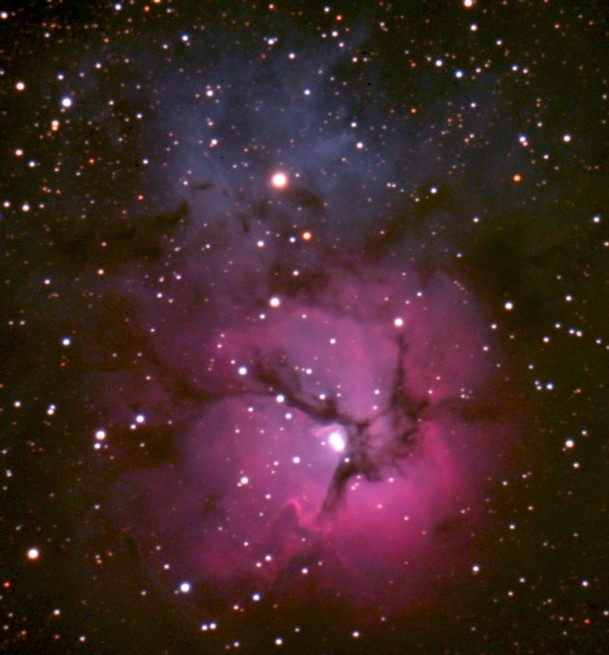
|
|
| M-20, Trifid Nebula |
|
The Trifid Nebula gets its name from dark gas and debris trisecting the main illuminated gas cloud. The reddish color comes from hydrogen gas glowing red hot. The blue is starlight reflecting off cooler gases. The Trifid Nebula is about 5200 light years away in our home galaxy the Milky Way. It can be seen with a relatively low power telescope or large aperture binoculars, and becomes quite spectacular in larger scopes. It is located in the southern sky throughout the summer in the heart of the Milky Way just above and to the right of a group of stars popularly known as The Teapot. This is an example of how taking a number of photos and combining them can get a picture many times better than any single picture could. As a single picture this nebula is barely visible. Combining multiple photos has the effect of increasing the signal to noise ratio, or averaging out the electronic noise and solidifying the image that's really there. "Stacking" is often used to effectively get beyond the exposure limits of a camera. But there is only so much info that can be gathered in any one shot, so that limits the possibilities of how good a stacked image can get. Some people stack dozens, even hundreds. |
|
8" F10 Schmidt Cassegrain Telescope,
Modified Canon 300D at
Prime focus |